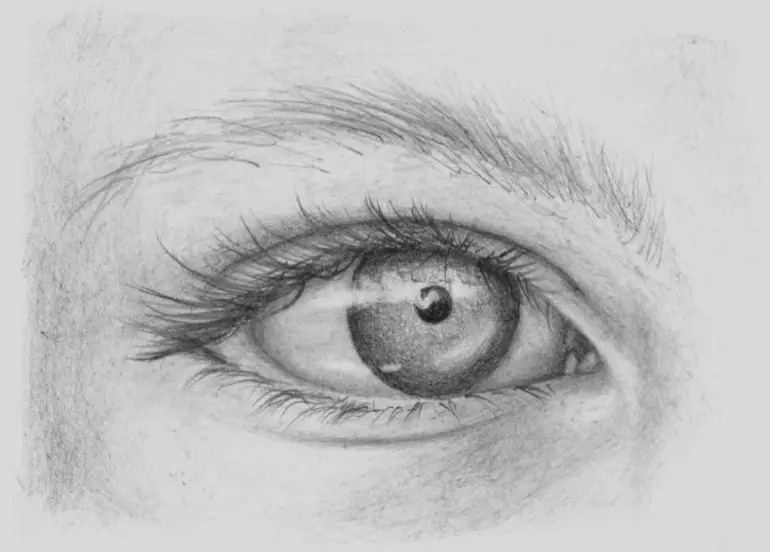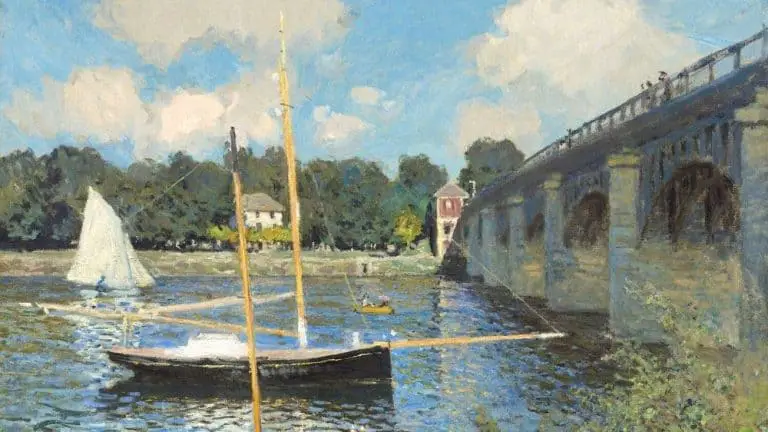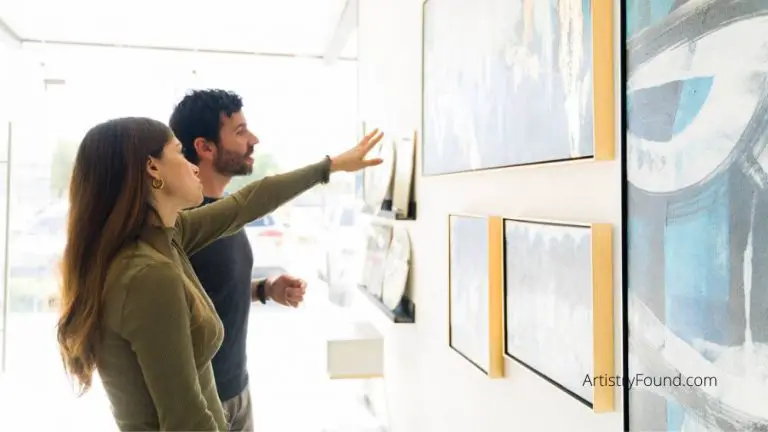Is Buying Art a Waste of Money or a GREAT Investment? (Explained)
The art world is getting some attention from a new group of people: investors looking to diversify their asset classes by investing in art. Of course, people buy art to beautify their homes or simply because they love it, but what about as an investment? Is buying art a waste of money or a really great investment?
While buying art may not be exactly described as a great investment, it is not a waste of money either. Art can appreciate, and people do make money by buying and selling art. While the chance of earning significantly from an art investment is small, it is not zero, and art does qualify as an asset.
In this article, I’ll extensively analyze the increasingly popular practice of buying art as an investment. Also, I’ll show you some of the problems you may encounter when buying fine art as an investment, and how to go about it if you’re willing to take the risks.
Who Buys Artworks?
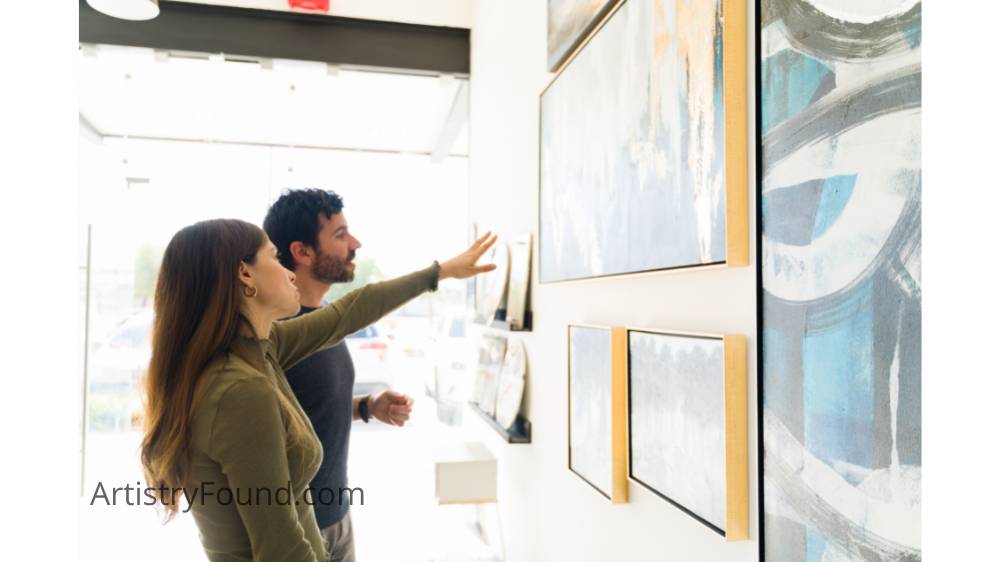
(This article may contain affiliate links and I may earn a commission if you make a purchase)
Before I go on to explain why (or why not) artworks make a great investment, it’s important to learn what kind of investor buys artworks as part of their investment portfolio in the first place.
In this section, we’ll look at the two main kinds of people that buy artworks and why they buy them.
1. Art Fans
This is the biggest market for artists. Fans are of two types. First, there are fans of a particular artist who are willing to pay for these artworks due to their love for the artist or art genre.
The second type of art fan buyers are art lovers in general. This type of art buyer isn’t interested in a specific artist. They simply buy a piece of art if they like it, regardless of the artist or art genre. This class of fan is usually into home design, and they’re generally not willing to pay big bucks for an artwork.
Fans don’t usually look into an artist’s history unless they’re fans of that artist. They usually buy at face value, and they don’t care about making profits, either in the short or long term.
Typically, fans don’t get to profit from the artworks they buy. However, if the artist behind one of their artworks becomes suddenly successful, they can occasionally sell the original work for exorbitant amounts of money; but again, this is an outlier.
2. Art Investors
Investors are the second set of people that patronize artists. Investors don’t usually follow a specific artist, but they do normally buy in a specific genre that’s almost guaranteed to yield results.
Rich people looking to buy art as an investment usually buy artworks after official appraisals, and they obsess about documentation after acquiring an artwork.
The goal of art investors is simple: they want to be able to sell the art in a couple of months, maybe years for something more substantial. They simply want to make money from art.
But does this work out well for most investors? Given that art is far less predictable than the stock market, do investors usually make art a large part of their investment portfolio?
If you’re planning to build a career by investing in art, you should keep reading this post to the end and perhaps invest in a good art consultant.
Where to Buy Art for Investment
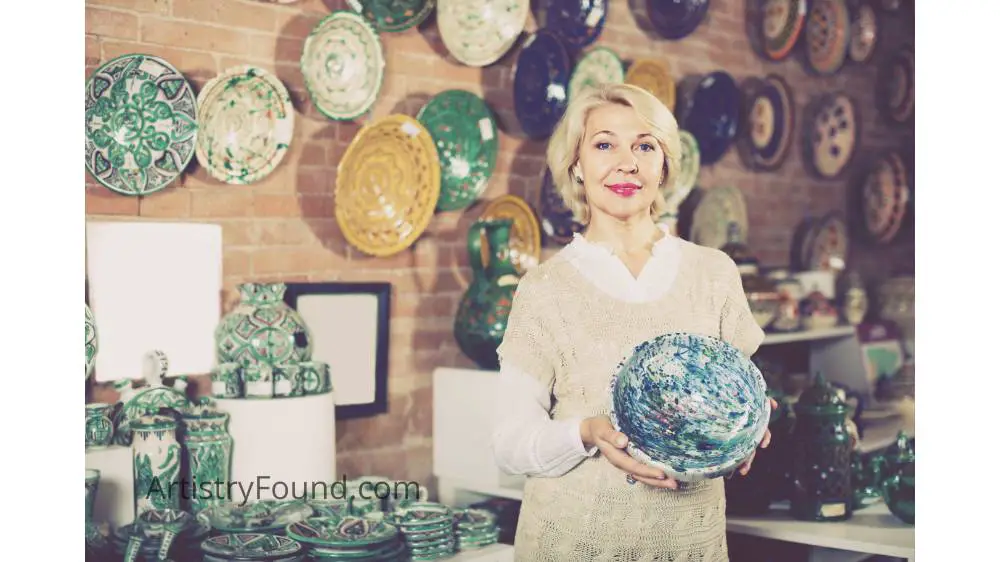
If you’re looking to diversify your portfolio by investing in artwork, you should know where to go. There are many places where you can buy paintings, designs, and sculptures, but as an investor, you must be more formal than the average art-buying audience.
Here are some avenues you can check out to buy investment-grade artworks for long or short-term speculative purposes.
1. Artist
An artist may not be the best avenue for purchasing investment-grade modern art, but if you’re quite experienced yourself, then this might work out well. One significant upside to this is that there are no involvements with any agents or dealers, leading to a cheaper and more flexible deal.
Many wealthy collectors have built an invaluable private collection by buying from artists they admire, with some amazing artworks to the tune of millions of dollars.
If you’re lucky enough to buy from an artist who grew to become a sensation, you can get an insane return on investment for your art purchases.
Related: 7 Reasons Why You Should Buy Art From a Living Artist
2. Auction House
Most of the insanely-priced artworks you hear about in the news are sold at auctions. Art auctions have been around for centuries, and they are a great avenue to get good works of art, but not necessarily at a fair price.
Art auction houses work like any other auctions in the investment world. The artist may set the reserve price, which signifies the lowest they’re willing to sell the artwork for. If the artist is deceased, professional appraisers will appraise the value of the art to set the reserve.
Interested buyers will then start bidding for the piece, starting from the reserve price. The highest bid usually wins an auction. The price at which an original art piece sells will normally affect the prices of similar artworks up for sale.
3. Art Gallery
Art galleries are a better purchase destination for investors than auctions for two reasons. Firstly, you don’t have to pay the exorbitant “premium” that’s added to the final price after winning a bid in an auction. Also, an art gallery will work well with artists, so you can meet with the person behind the painting before paying for it.
Art galleries are great for discovering emerging artists that are willing to sell their works for significantly less than what you’d get at an auction.
Problems of Investing in Art
While artists obsess over the looks of their artworks, investors are much less interested in the aesthetics of a particular art piece. While investing in any asset class, it’s imperative to analyze your revenue potential, both in the long and the short term; and that’s where the main problem with art investments comes in.
Since artworks aren’t like stocks and bonds, or even cryptocurrencies, most of the rules that apply to the investment world simply don’t work in the world of art.
If you’re thinking about investing in an artwork, you should know the following risks and problems of that decision, and how it may affect your investment portfolio.
1. No Predictable Return on Art Investment

If this problem with art investments can be solved, investors can safely invest in artworks, as most of the other problems stem from this primary one.
Stories like Leonardo da Vinci’s art selling for $450 million after selling for $45 just a few dozen years ago is enough to make any art collector optimistic. However, the chances of you collecting an artwork that will perform nearly as well is so infinitesimally small that you shouldn’t even try.
This is expected as no investor can expect such insane return rates on regular investments anyways. But the problems with art investments don’t end there. Not only is it unlikely you’ll make these huge profits, but you also can’t even expect to make little profits regularly.
Going by statistics about artworks and their return on investment, you will be made to believe that they’re a compelling investment asset. What else can you say about something that appreciates by 10% per annum (or just 6%, going by Stanford Business School figures)?
As uninteresting as these figures look compared to the da Vinci example, they’re still biasedly skewed.
According to a report, only about 2% of artworks in the market ever get resold. From that statistic, we can conclude that people only sell their art when someone offers to buy it for higher than what they originally paid for it (which is pretty rare).
Also, the figures don’t account for artworks that don’t sell at all. The fact is that most artworks for sale in the resale art market don’t ever sell at all.
Add this to the fact that you don’t get any returns while sitting on an artwork; instead, you need to pay taxes and keep it in good shape if you’re to have any hope of selling it for a maximum price later on.
In short, when you buy an artwork to resell at a higher price at a later date, you’ll need to keep your fingers crossed hoping that someone bids on it, while expecting a 6% profit per year if you succeed in selling it.
2. Art Transaction Costs
While the figures associated with art investing are already off-putting, the costs of selling, buying, and keeping artworks are even more annoying.
By extensively analyzing a traditional stock, you can determine if you’re paying a fair price for it. With an artwork, however, there’s no way you can tell. If you don’t have extensive experience with buying artworks, you can end up paying disproportionately more than you should’ve paid.
This problem is reinforced by the belief that there is no “fair price” for any artwork. With present technology, there is no way to objectively appraise an artwork to determine how much an investor should be paying for it.
Also, you may find yourself paying through the nose just to get the “masterpiece” that you want to have; while in reality, that masterpiece might be nothing more than glorified nonsense.
This is not to mention that many dealers mark up prices significantly. A 100% markup in art prices isn’t uncommon, and 50% would be considered quite low. When purchasing artwork from an agent or dealer, it’s important to know that you may be paying twice as much as the artist is charging for their artwork.
3. Art is Difficult to Maintain
When you buy art as an investment, you don’t hang it in your living room to beautify your home. Doing so would have a lot of negative effects on your investment.
The proper handling of a piece of artwork is an art in itself. First, you must take care not to touch any of the painted surfaces. The best way to avoid this is by framing the artwork, which is one of the things you should do as soon as you make the purchase.
As you might expect, framing an expensive piece of artwork is very expensive all on its own.
Also, you may need expert help to store your artwork in the best conditions for a long period of time. For instance, most paintings begin to lose their luster and vibrance over time, and storing them in unfavorable conditions isn’t the best way to enhance their lifespan.
Generally, all paintings should be stored in a cool and dry climate-controlled environment with low relative humidity. Sunlight is the enemy of paintings, as it can discolor and fade almost all types of paint and canvases.
As you can see, hanging a painting or other artwork purchased as an investment in your home is a bad idea. You will need to pay for an appropriate place to store your art piece. Additionally, you may need to pay someone to care for and maintain the artwork while you’re waiting to re-sell it.
How to Invest in Art Wisely

Artworks shouldn’t make the bulk of an investor’s portfolio, but there’s no harm in trying out this asset class for a bit of diversity. If you’ll be investing in art, you will want to invest responsibly to avoid losing out in the market.
Learning from investors that have bravely invested in artworks is a good idea. Here are some tips to follow while investing in artworks to minimize your chances of losing.
1. Learn to budget for art.
Investors are very familiar with budgets. But since art changes the rules in everything, you must also be prepared to follow a different set of rules when it comes to determining a budget for your art purchases.
Your budget should be pretty modest, but not too low. You should also avoid budgeting an insane amount of money unless you’re comfortable with losing that much. Experts recommend a budget range of $5,000 to $1,000,000, depending on the size of your overall investment portfolio.
As is the case for most similar investments, only invest what you can afford to lose.
2. Make it a small part of your portfolio.
As a profit-oriented investor, you wouldn’t want to make artworks a sizable part of your portfolio for obvious reasons.
Firstly, you need to maintain the artwork yourself or pay others to do that on your behalf. Secondly, there is no assurance that you’ll be making any profit on the artwork in many years to come.
If you’re a professional investor that makes a bulk of their income from returns on their investments, you should only invest as little as possible for art, if at all.
3. Understand the illiquidity of art.
Some assets like stocks or bonds can be sold and converted into cash very quickly. These assets are referred to as liquid assets and are preferred by most investors.
On the other hand, illiquid or non-liquid assets are the exact opposite. Even if you’re willing to sell them, it’s difficult to get a buyer and convert them to cash quickly. Most times, you’ll need to be patient to break even, and making a profit is another story.
When buying artworks as an investment, buy art that you would have bought anyway even if it weren’t a good investment as you may be stuck with it forever.
Does Art Make A Great Investment?
The record price paid for a piece of artwork is $450.3 million, and it was paid for a painting supposedly made by Leonardo da Vinci scores of years ago. That sounds outrageous, but it will be even more so when you learn that the same artwork was sold for just $45 about 60 years ago.
You may ask: what exactly is the difference between the $450 million artwork and the $45 artwork. Physically, the difference is simple: the painting is older and a bit more faded now.
Technically, it should be worth even less now; but no, the price multiplied by 10 million times. The reason why this is the case is that the painting when sold for $45 was presumed to be by a follower of Leonardo da Vinci. Later on, it was determined that the painting was actually painted by the master himself.
Who knows, in another 50 years the painting may once again, for some reason, be believed to have been painted by someone else and the price could plummet.
If you think that’s crazy, maybe you should rethink your decision about investing in art. Artworks aren’t commodities with a predictable value, and making a profit on a piece of artwork is similar to winning a lottery: both rare and rewarding.
There are many reasons why artworks shouldn’t be your go-to item for tangible investment. While you can profit from selling your artworks, analyses and numbers show that this is very unlikely.
More From Artistry Found
- Should You Tip an Artist When Buying Their Artwork? (Explained)
- Is Buying Art a Tax Deductible Expense? (Explained)
- Are Art Prices Negotiable? (A Guide to Buying Art)
- 7 Reasons Why You Should Buy From Local Artists
- Do Giclee Art Prints Hold Their Value? (Explained)
- Do Unsigned Paintings Have Any Value? (Explained!)


